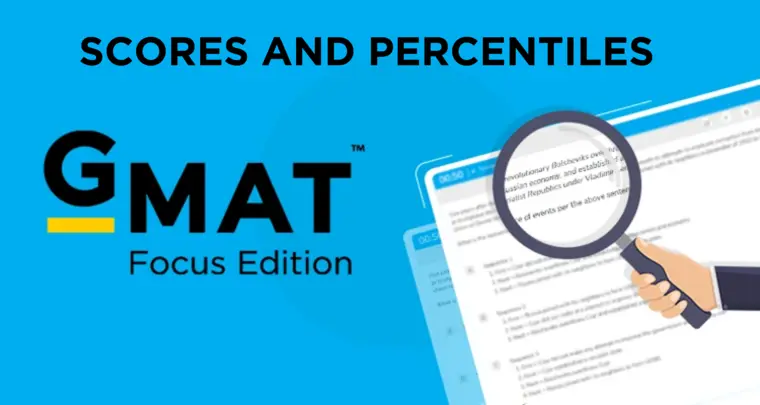Introduction
The Graduate Management Admission Test (GMAT) has evolved with the introduction of the GMAT Focus Edition, featuring the new Data Insights (DI) section alongside the traditional Quantitative and Verbal sections. The Data Insights section is a strategic blend of Integrated Reasoning and Data Sufficiency elements from the previous format, , which can be mastered through targeted GMAT Data Insights practice questions.
This section is composed of 20 questions to be answered within a 45-minute timeframe. It consists of five question types –
- Data Sufficiency,
- Graphics Interpretation,
- Table Analysis,
- Two-Part Analysis,
- Multi-Source Reasoning
The GMAT Data Insights section may initially appear daunting, but with strategic preparation and practice, it is possible to achieve excellence. To excel in this section, it is crucial to familiarize yourself with each data insights question type. Remember, effective time management is critical in this section, as you must maintain a steady pace while thoroughly analyzing and interpreting the provided data.
In this article, we will understand each question type and explore GMAT data insights practice questions to provide a comprehensive view of what to expect in the GMAT Data Insights section.
The best way to understand the GMAT Data Insights question types is by trying the test out for yourself.

GMAT Data Insights Question Types
1) Data Sufficiency Questions (DS)
These questions present you with a mathematical problem and two separate statements labeled (1) and (2). The goal is not necessarily to solve the problem but to determine whether the information given in the statements, either separately or together, is sufficient to solve the problem. DS questions assess your ability to identify the key pieces of information needed to solve a problem and your understanding of the concepts of “sufficient” and “insufficient” data.
We recommend you to read below articles on DS:
Practice Question :
A small library has books on twenty different subjects including, most prominently, history. One afternoon, a librarian arbitrarily picks up 100 books for reshelving from among the books returned that day. All the books returned that day were borrowed during the past three weeks. Are fewer than 20 percent of the books the librarian picks up on history?
- Statement 1 : Fewer than 20 percent of the books in the library are on history.
- Statement 2 : During the past three weeks, exactly 15 books on history were borrowed from the library.
Here is the link to the solution .
2) Graphics Interpretation Questions (GI)
These questions require you to interpret and analyze information presented in a graph or other visual display, such as a scatter plot, x-y graph, bar graph, pie chart, or statistical curve distribution. GIQs challenge your ability to extract relevant information from visual data, draw inferences, identify relationships and patterns, and apply those insights to answer related questions.
Embark on your GMAT Focus Edition journey with e-GMAT, where we provide a Personalized Study Planner and superior GMAT focus mock exams, including GMAT Data Insights practice questions to enhance your preparation.
Practice Question :
As the digital age advances, the number of visitors to traditional libraries across various cities in India has seen a shift. The chart provided highlights the visitor counts in four distinct cities for 4 different years in a span of 14 years.

Complete the statement that most accurately reflects the information provided.
Between 2009 and 2023, the visitor count to traditional libraries in ______saw an increase of approximately ______ percent, rounded to the nearest 10 percent.
3) Table Analysis Questions (TA)
For these questions, you are given a table of data that you can sort on various columns. A set of statements follows the table, and you have to determine whether each statement is true or false based on the information in the table. TAQs test your ability to analyze and synthesize data from a table, discern patterns or trends, and make accurate statements about the data.
We recommend you to read below articles on TA:
1) Correlation Unveiled: A Tactical Approach to GMAT Table Analysis – Part 1
2) Correlation Unveiled: A Tactical Approach to GMAT Table Analysis – Part 2
Practice Question
Dietician: Because of their chemical makeup, some oils are better suited for cooking at high heat than others. This is important because heating an oil above its smoke point—the temperature at which the oil begins to smoke—produces toxic fumes and free radicals, which can be harmful. Refined oils are highly processed with chemicals and should be avoided. Here are some recommendations for suitable uses of oils based on their heat type.
- No heat—use these oils on salads or as condiments
- Low heat—use these oils for sauces and for baking
- Medium heat—use these oils for light sautéing
- High heat—use these oils for browning and frying
The table lists information about the oils that Mariano is considering buying after reading the dietician’s advice. The table also includes the amount of each oil per container and the price for that amount of oil.

| True | False | Statement |
| ⚪ | ⚪ | Among the oils listed that are of the type the dietician recommends for frying, there is only one that Mariano can choose if he follows all of the dietician’s advice. |
| ⚪ | ⚪ | Grape-seed oil has the greatest price per ml of all high-heat oils listed. |
| ⚪ | ⚪ | Among the oils on the list, there is a strong positive correlation between the amount per container (in ml) and the price for the container (in dollars). |
4) Two-Part Analysis Questions (TPA)
These questions provide a problem that has two related parts. Your task is to find the correct answer to each part, keeping in mind that the answers are interconnected. The format can be either mathematical or verbal, requiring you to tap into skills such as logical reasoning, text analysis, or quantitative problem-solving.
Practice Question
Journalist: Workers at Facsum Inc. have threatened to strike if management does not meet their demands for an immediate 5% pay raise and a paid lunch break. Further, workers are insisting that the company rehire 12 employees who were laid off for complaining about substandard wages and working conditions. It is well-known that Facsum reported that negative profits in 3 of its previous 4 quarterly earnings reports. We believe a strike is inevitable.
Identify an assumption required by the journalist’s argument and a fact that, if true, would most strongly support the required assumption. Make only two selections, one in each column.
| Assumption | Supporting Fact | Statement |
| The workers would likely be willing to compromise with respect to the paid lunch break. | ||
| When the leaders of a union call for a strike, the members inevitably vote to strike. | ||
| Facsum is unwilling to negotiate with the workers. | ||
| The majority of the losses were due to a significant decline in profit margins. | ||
| The 12 laid off employees were not laid off for any performance-related reasons | ||
| Facsum likely does not have sufficient cash flow or cash reserves to support increased expenses. |
5) Multi-Source Reasoning Questions (MSR)
MSR questions present you with data from multiple sources, which could be short texts, charts, or tables. These questions require you to effectively analyze, interpret, and integrate information from various sources to solve complex problems. They test your ability to navigate and synthesize multi-faceted information and your aptitude for decision-making based on that information.
Practice Question
Tab 1 – Prospector
Gold is typically mined from two different types of geological formations (known as deposits): lode deposits and placer deposits. Lode deposits are what prospectors dream of finding: large deposits of nearly pure gold. Such deposits are located where they were originally deposited by the mineral-bearing solutions that carried the gold up from the earth’s interior. Placer deposits, on the other hand, come from preexisting lode deposits that are exposed at the surface of the earth. These lode deposits’ exposure to the weather causes gold to be released from the surrounding rock and transported by rivers in the form of dust or flakes. When a stream carrying the gold slows, the gold collects in pockets of sand. Placer-deposit mines have historically been the source of approximately 35 percent of the total gold mined in the US. However, in recent years, the quantity of gold mined from such deposits has decreased as the readily accessible deposits have been exhausted. Thus, despite an increase in net gold mined, placer-deposit mining now accounts for only a few percent of total gold mined in the US.
Tab 2 – Environmental Scientist
Because—unlike mining lode deposits—mining placer deposits does not usually involve crushing rock and using chemicals to extract gold, the environmental impacts are generally less than those of mining lode-deposits. The primary impacts of placer-deposit mining are habitat destruction and sediment release. Habitat destruction occurs as a result of river diversions and disruptions of river bottoms and banks, and the large amounts of silt and sediment released can severely impact water quality. Modern commercial operations tend to use settling ponds to prevent this discharge.
Mining lode deposits has a much larger environmental impact by virtue of the size of such operations, the generation of waste material, and the use of toxic chemicals. The gold comes out of the ground as raw ore—gold aggregated with other minerals. On average, such mining operations process approximately 130 kilograms of raw ore to produce 1 gram of pure gold. Unlike placer-deposit mines, modern commercial lode-deposit mines are massive operations, some displacing and processing up to 180,000 metric tons (1 metric ton = 1,000 kilograms) of raw ore per day.
Question 1 – Inference

Question 2 – Inference

Question 3 –Application

Question 4 – Detail

Conclusion : GMAT Data Insights Practice Questions
The GMAT’s new Data Insights section is a challenging yet rewarding addition, equally contributing to the total GMAT score alongside the Verbal and Quant sections. This section tests a blend of analytical and decision-making skills through various question types. Success hinges on a clear understanding of each data insights question type, effective time management, and the ability to critically analyze data. While initially daunting, mastery of these skills is achievable with strategic preparation and practice. Excelling in Data Insights not only boosts GMAT scores but also prepares candidates for real-world business challenges, making it a crucial component for aspiring management professionals.
Start your GMAT Focus journey with our free GMAT Focus mock test to gauge your baseline score, and then create a personalized study plan. Dive into our free trial for targeted prep. Trusted by thousands with 2600+ reviews on GMAT Club, e-GMAT is your partner in mastering the GMAT. Contact us at support@e-gmat.com for expert guidance.















